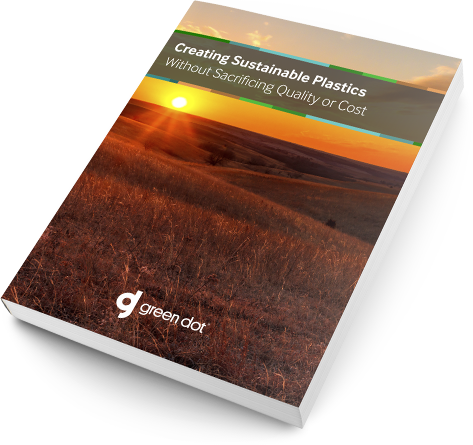The Benefits of Sustainable Plastics
Creating a sustainable product and attracting consumers can seem like a complicated process. Yes, consumers want to feel good about what they buy and its effect on the environment—from electric cars to local food—but they aren’t often willing to pay much more than they would for a non-sustainable product. 78% percent of consumers say they want to buy more sustainable products, but only 43% will pay more. So the goal is to develop something that’s sustainable, affordable, and better.
Bioplastics and biocomposites can meet this goal.
The Benefits
Utilizing plastics made with reclaimed, recycled, or renewable feedstocks, can create cost-competitive, high-quality products with a reduced environmental footprint. Renewable and reclaimed materials can be used to enhance the aesthetics of plastics, providing a more natural look and feel that can improve product differentiation. These materials can also be used to improve performance, adding strength and increasing the durability of plastic parts, while lowering manufacturing costs.
These materials can significantly increase the sustainability of your product. Reducing the amount of non-renewable feedstocks used in plastics can lighten the environmental footprint of your product. Biocomposites made from agricultural byproducts can increase crop values for farmers and support rural communities without competing with food sources. Manufacturers can reduce landfill waste and create valuable new markets for industrial byproducts, like wood fibers and reclaimed and recycled plastic. Compostable plastics can encourage consumers to further reduce landfill waste by returning materials back to nature rather than merely throwing them away.
Incremental Improvement
Consumers want to contribute to a more sustainable world but won’t sacrifice quality or price. Imagine a product made from the “perfect plastic,” one that meets almost every sustainability criteria. However, this perfect plastic product costs twice that of its traditional plastic counterpart. So consumers are less likely to buy this perfect plastic product simply because of the price. If a product does not appeal to consumers, the environmental benefits will never be realized.
Take an electric car, for example. Sure, electric cars produce fewer carbon emissions than gas-powered cars. But, in the grand scheme of reducing carbon emissions, higher fuel efficiency standards for gas-powered autos have a far greater positive environmental impact because the vast majority of consumers chose to drive gas-powered cars.
Similarly, improving the sustainability of the plastics products that we use every day can have a significant environmental impact.
Bioplastics and biocomposites help OEMs create innovative products that maintain quality at an affordable price, and make consumers feel good about the sustainable products they’re buying. This can be the simplest way to lighten the environmental footprint of products. These materials can reduce the amount of non-renewable feedstocks while increasing the physical and aesthetic attributes of a product.
What You Can Do?
Bioplastics and biocomposites allow product designers and manufacturers to satisfy consumers with cost-competitive products with a lighter environmental footprint and enhanced performance and aesthetics. You can stand behind your commitment to sustainability—and you can market that—all while making and selling a quality product.
Want to learn more about the benefits of sustainable plastics? Request a consultation with one of our sustainability experts today or download our whitepaper below, Creating Sustainable Plastics Without Sacrificing Quality or Cost.

Creating a more sustainable plastic
Learn how we’re meeting demand for more sustainable goods without sacrificing quality or cost.



